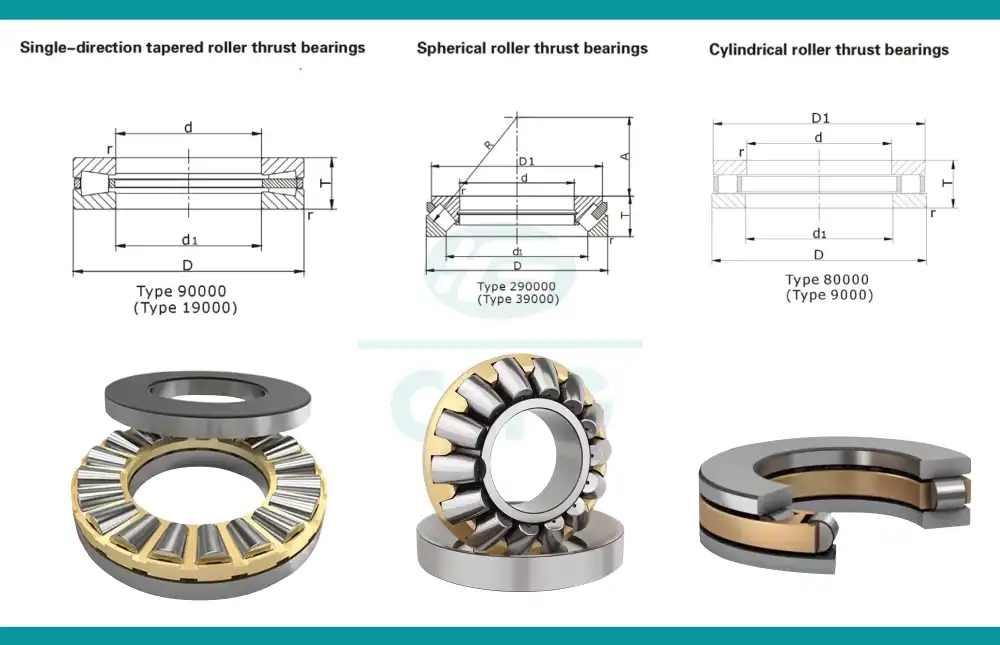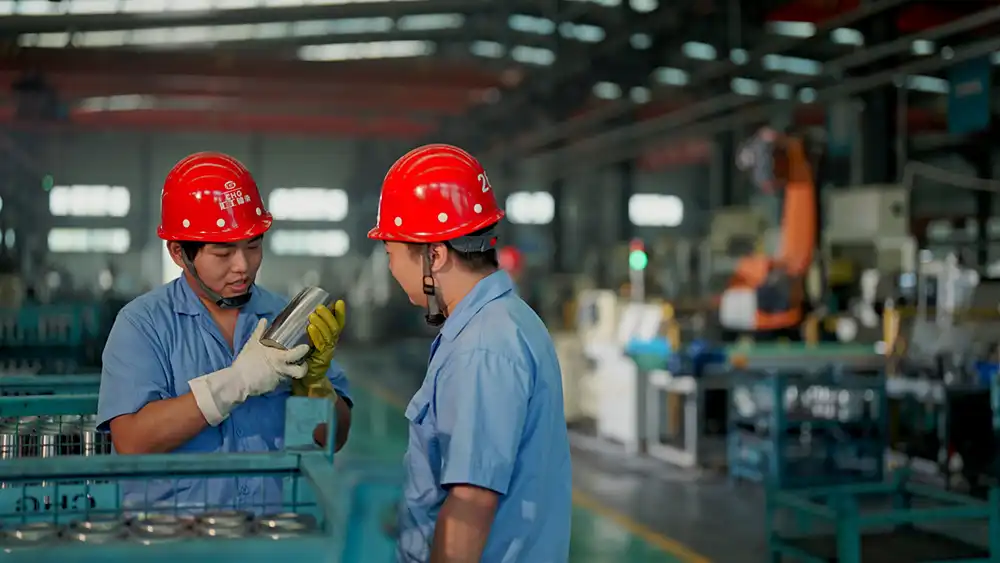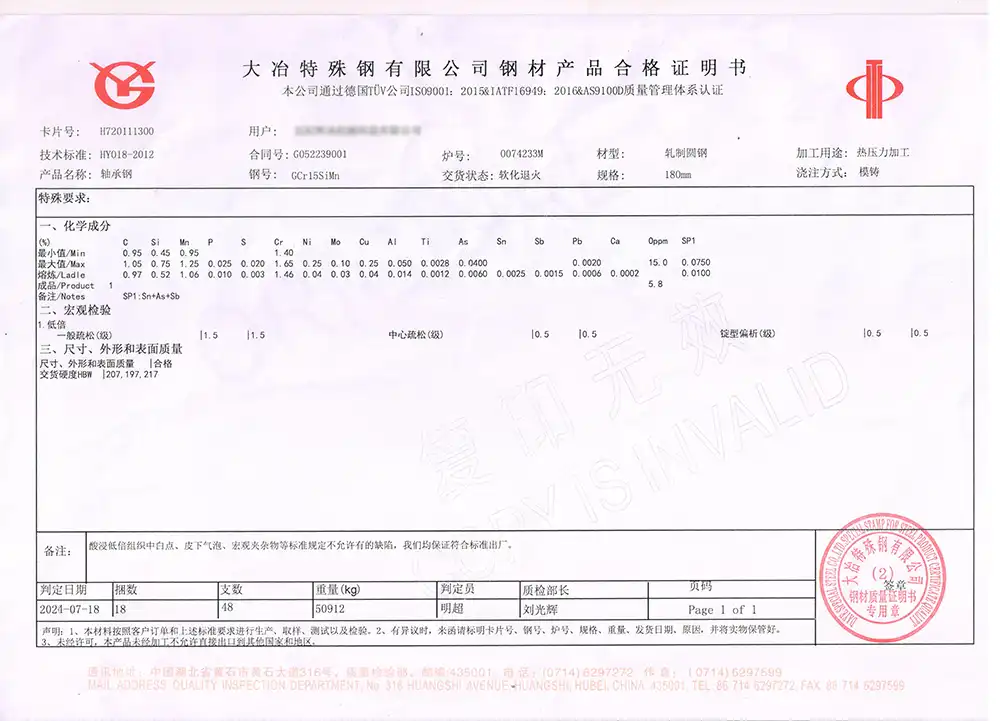Thrust Roller Bearings: Perfect for Supporting Axial Loads in Industrial Machinery
In the realm of industrial machinery, thrust roller bearings play a crucial role in supporting axial loads and ensuring smooth operation of various equipment. These specialized bearings are engineered to handle substantial axial forces while maintaining optimal performance in demanding industrial applications.

At Luoyang Huigong Bearing Technology Co., Ltd., we pride ourselves on our expertise in thrust roller bearing solutions. Our experienced R&D team provides technical guidance, customized solutions for different working conditions, and leverages 30 years of industry experience through partnerships with major enterprises. With advanced production equipment and testing instruments, we hold over 50 patents and have obtained ISO9001 quality management system and ISO14001 environmental management system certifications. As a 2024 quality benchmark enterprise, we continue to set industry standards. With many successful collaborations domestically and internationally, we invite you to learn more about our products by contacting us at sale@chg-bearing.com or calling our hotline at +86-0379-65793878.

What Makes Thrust Roller Bearings Essential for Heavy Industrial Applications?
Thrust roller bearings are indispensable components in heavy industrial machinery due to their exceptional load-bearing capabilities. These bearings come in various types, each designed for specific applications:

Cylindrical roller thrust bearings feature separable components and excel in handling one-directional axial loads. While they can manage slight shock loads, their load capacity significantly surpasses that of thrust ball bearings of similar dimensions. These bearings effectively limit axial shaft displacement in one direction, making them ideal for axial locating applications.
Tapered roller thrust bearings demonstrate superior load-carrying capacity compared to their cylindrical counterparts. They specialize in managing axial loads and controlling axial displacement in a single direction, making them perfect for applications requiring precise axial positioning.
Spherical roller thrust bearings offer unique advantages in applications where misalignment might occur, providing enhanced flexibility while maintaining robust load-bearing capabilities.
The size range of these bearings is substantial, with inner diameters spanning from 200mm to 380mm and outer diameters ranging from 400mm to 670mm. Their weight varies between 75kg and 274kg, accommodating diverse industrial requirements.
How Do Different Cage Designs Impact Bearing Performance?
The design and construction of bearing cages represent a critical factor in determining overall bearing performance, reliability, and operational longevity in industrial applications. Metal machined solid cages, which serve as the industry standard for cylindrical roller thrust bearings, provide exceptional structural integrity and dimensional stability under heavy loads and varying operational conditions. These precisely engineered components ensure optimal roller guidance and maintain proper spacing between rolling elements, thereby minimizing friction and heat generation during operation. The manufacturing process for these metal cages involves sophisticated machining techniques that ensure tight tolerances and superior surface finish, contributing to improved bearing performance and extended service life in demanding industrial environments.
In the context of tapered roller thrust bearings, both steel and brass cages offer unique advantages that cater to specific application requirements. Steel cages exhibit remarkable strength and durability, making them particularly suitable for heavy-duty applications where extreme loads and harsh operating conditions are common. These cages demonstrate excellent resistance to deformation under high loads and maintain their structural integrity even at elevated temperatures. Brass cages, on the other hand, possess superior tribological properties and demonstrate excellent performance in applications where lubrication conditions might be less than optimal. The natural lubricating properties of brass, combined with its good thermal conductivity, help reduce friction and improve heat dissipation within the bearing assembly, particularly crucial in high-speed operations or applications with frequent start-stop cycles.
The evolution of cage design has led to significant developments in customization capabilities, allowing manufacturers to optimize cage configurations for specific operating conditions. These advancements include modifications in cage pocket geometry, material composition, and surface treatments that enhance lubricant retention and distribution. Modern manufacturing techniques enable the production of cages with optimized mass distribution and improved dynamic stability, resulting in reduced vibration levels and enhanced operational reliability. Furthermore, the integration of advanced materials and coating technologies has expanded the performance envelope of bearing cages, enabling their successful deployment in increasingly challenging industrial environments.
Which Industries Benefit Most from Thrust Roller Bearing Applications?

The implementation of thrust roller bearings spans across numerous industrial sectors, each benefiting from their unique capabilities in managing axial loads and ensuring equipment reliability. In the heavy machine tool industry, these bearings play a fundamental role in maintaining precise positioning and movement control in various equipment types. Modern CNC machines rely heavily on thrust roller bearings to maintain accurate tool positioning and workpiece manipulation, while industrial presses utilize these components to handle the extreme axial forces generated during forming operations. The integration of advanced thrust bearing technologies in metalworking equipment has contributed significantly to improvements in manufacturing precision and production efficiency, enabling the processing of increasingly complex components with tighter tolerances and superior surface finish quality.
The marine industry represents another crucial application domain where thrust roller bearings demonstrate their exceptional capabilities in managing heavy loads under challenging conditions. Large power gear boxes for ships incorporate specially designed thrust bearings that can withstand the constant forces generated by propulsion systems while operating in corrosive marine environments. These bearings play a vital role in maintaining the reliability of marine propulsion systems, where any equipment failure could have severe consequences. Additionally, marine winches and deck machinery benefit from the robust design and high load-carrying capacity of thrust roller bearings, ensuring smooth and reliable operation in critical marine operations.
In the construction and mining sectors, thrust roller bearings face some of the most demanding operating conditions across all industrial applications. Heavy-duty excavators rely on these bearings to maintain stable boom positioning and movement control while managing substantial axial loads generated during digging operations. Drilling equipment, particularly in mining and oil exploration, subjects thrust bearings to extreme forces and harsh environmental conditions, requiring specialized designs and materials to ensure reliable performance. The implementation of thrust roller bearings in heavy-duty cranes has enabled the handling of increasingly heavy loads while maintaining precise control and operational safety, contributing significantly to advancements in construction capabilities and efficiency.
The power generation industry presents unique challenges that thrust roller bearings are particularly well-suited to address. In turbine systems, these bearings play a crucial role in managing the axial forces generated by steam or gas flow, while simultaneously maintaining precise rotor positioning essential for efficient power generation. Generator equipment relies on thrust bearings to handle the combined effects of electromagnetic forces and mechanical loads, ensuring stable operation and optimal power output. The growing wind power sector has created new demands for thrust bearing technology, particularly in handling the variable loads and environmental conditions experienced by wind turbine components. These applications require bearings capable of maintaining reliability while operating under varying speeds and loads, often in remote locations where maintenance access is limited.

The materials used in thrust roller bearing construction, including GCr15, GCr15SiMn, and G20Cr2Ni4A, undergo rigorous selection processes to ensure optimal performance across these diverse applications. These materials are chosen based on comprehensive analysis of operating requirements, including load patterns, speed variations, temperature ranges, and environmental conditions. Advanced heat treatment processes and surface finishing techniques are applied to enhance the bearing materials' wear resistance, fatigue strength, and overall durability. The continuing evolution of material science and manufacturing technologies has enabled the development of bearings with improved performance characteristics, longer service life, and enhanced reliability across all industrial applications.

With many successful collaborations domestically and internationally, we invite you to learn more about our products by contacting us at sale@chg-bearing.com or calling our hotline at +86-0379-65793878.
References:
1. SKF Bearing Installation and Maintenance Guide (2023)
2. Timken Engineering Manual (2023)
3. Journal of Tribology: "Advanced Bearing Materials and Designs" (2023)
4. Industrial Machinery Handbook: "Bearing Selection and Application" (2024)
5. American Bearing Manufacturers Association Standards (2023)

